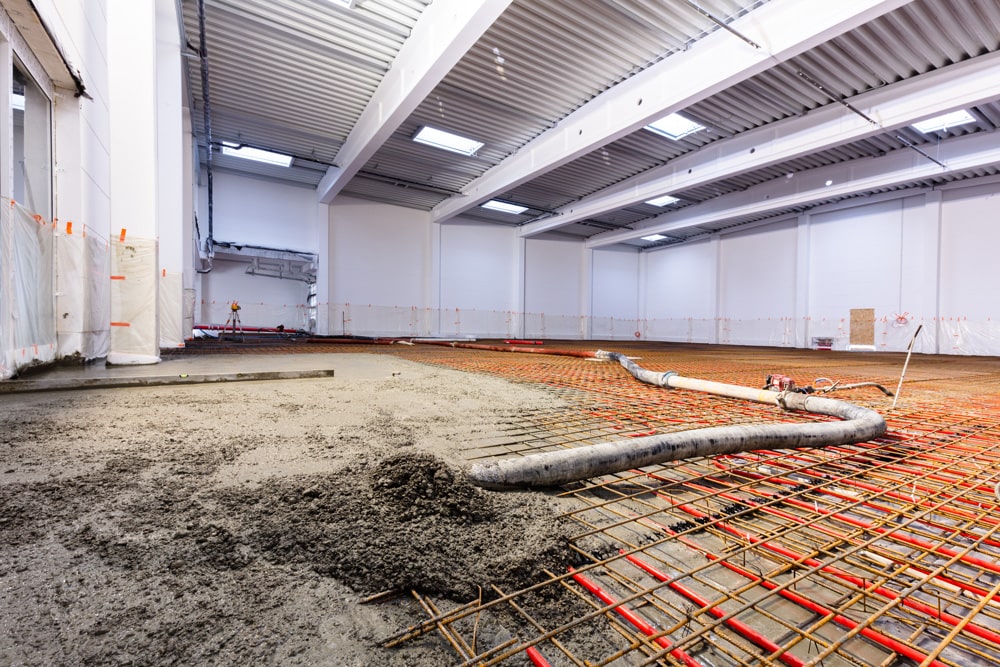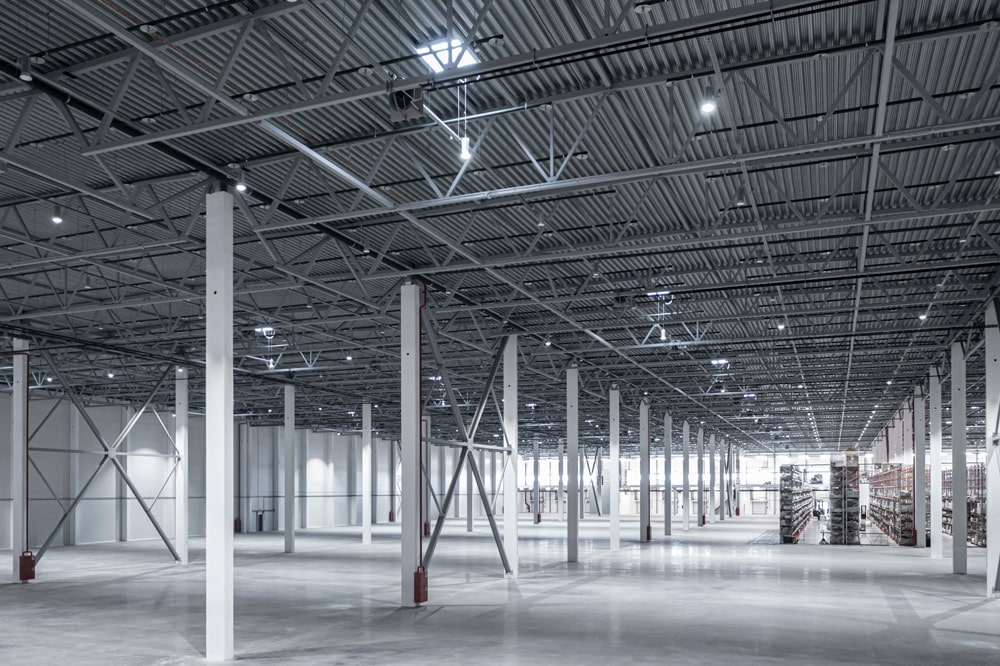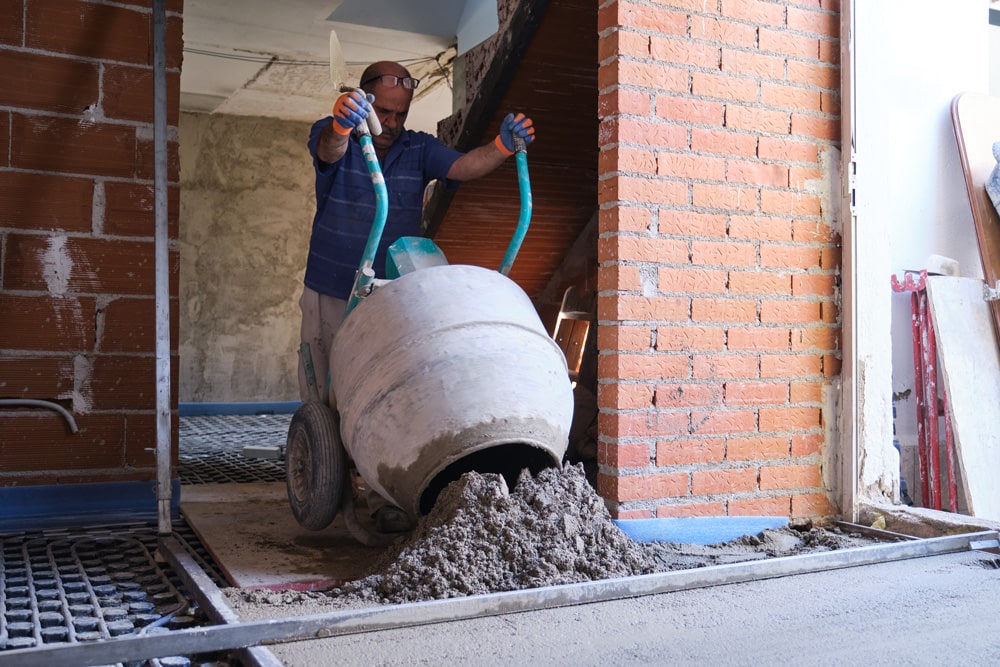Despite concrete’s widespread presence in construction, many commonplace assumptions about the material persist. In this article, we dispel several myths about this material and its use in concrete based flooring.
1. Concrete is a cold material
A lot of people think like this, but that’s not true. Concrete surfaces are warmer than they appear at first glance. Cement and concrete are great insulators because they absorb and store heat, releasing it gradually throughout the day. As a result of its high heat-absorbing capacity, concrete is preferable to tile floors.
Subfloor heating can be installed in concrete floors as well. Caution is advised when first utilising the system if this is something you are considering. In order to preserve your finish, you must wait until the concrete has properly cured before turning on the heating system. Over the course of a couple of weeks, you should slowly raise the thermostat.
2. Concrete is not good for the environment as a whole
Concrete’s bad reputation stems, in part, from the fact that cement factories are major sources of carbon dioxide emissions. A well-built concrete structure can last for hundreds of years without showing any signs of wear and tear. Over the course of its lifetime, a concrete building’s electricity usage accounts for more greenhouse gas emissions than the building itself.

3. DIY concrete projects are simple
Despite the availability of pre-mix concrete in hardware stores and a plethora of do-it-yourself tutorials online, installing concrete properly requires skill and experience. Obviously, if you know what you’re doing, a small job can be handled with a DIY approach. Driveways, walkways, slabs, and other large-scale concrete projects require professional planning, execution, and finishing. Choose between ready mix concrete and volumetric concrete to save money without sacrificing quality.

4. Concrete is an ugly material
The typical concrete that comes to mind when the word “concrete” is mentioned is the boring grey variety used in building and infrastructure projects. However, there is a wide variety of choices in terms of hue, texture, pattern, and end result. Making something original and intriguing has never been simpler.
5. Water makes concrete weak
It’s true that cracking, flaking, and blistering are more likely to occur in concrete that has been mixed with too much water. It is true, however, that concrete needs water in order to hydrate and strengthen during the curing process. Curing concrete does not involve drying but rather the evaporation of water. Hydration of concrete can go on for a while if the conditions are right (plenty of water and a warm environment). Dehydration occurs in freshly mixed concrete when the relative humidity drops below about 80%. Hydration of new concrete is drastically slowed if the temperature drops below 5 degrees Celsius. Managing the moisture availability is crucial to ensure the concrete cures properly and avoids cracking due to rapid moisture loss in high temperatures. Curing concrete for longer results in a more robust and long-lasting structure.
6. Decorative overlays are only used to repair major cracks and flaws
Thin coatings like decorative overlays can’t hide flaws in the substrate or block light from shining through, so they’re not a good choice for hiding cracks. When deciding whether or not to use an overlay, the adage that “a topping is only as good as what you put it on” rings true. Sometimes an overlay is considered because of a flaw in the surface below it, but before applying any decorative coatings, it is best to fix the flaw with appropriate repair products like crack fillers and primers when doing concrete based flooring.
7. Water cannot pass through concrete
In reality, even the densest concrete has a certain amount of porosity. Of course, water and other liquids and gases in vapour form can still penetrate concrete. Reduce permeability with mix designs that use less water than cement, properly graded aggregate, and chemical admixtures like plasticizers. Water and liquid resistance can be improved through the use of sealers and other surface treatments.
8. Concrete’s longevity improves proportionally with its strength
The concrete’s durability is not just determined by its compressive strength.
Although concrete’s compressive strength is crucial, it is not the only factor that determines how well it will hold up in severe conditions. Corrosion of reinforcing steel, freeze-thaw cycles, the alkali-silica reaction, and sulphate attack are the usual main causes of concrete deterioration. The key to longevity is lowering permeability.
Tension zones require structural reinforcement to hold the crack faces together rather than prevent cracking. Due to the transfer of tensile stress from the concrete to the steel reinforcement when the concrete cracks, reinforced concrete can withstand greater tensile loads than concrete alone.
9. Reinforced concrete will not crack
I wish that were the case! There is no foolproof way to keep concrete from cracking as a result of volume change, even with structural reinforcement.
Because concrete is weak in areas of tension, it may crack if it is prevented from moving as its volume changes (during setting and drying). Retaining walls do not prevent cracking, but they do keep the crack faces from spreading further. Due to the transfer of tensile stress from the concrete to the steel reinforcement when the concrete cracks, reinforced concrete can withstand greater tensile loads than concrete alone.

10. Concrete that is laid and finished flat and level will stay that way.
The volume of concrete shifts throughout the process of setting, hardening, and drying. Edges of slabs tend to curl when there is a significant temperature or moisture content difference between the top and bottom of the slab. When the top of the slab is drier or cooler than the bottom, the edges of the slab at the joints will curl upward. When the top surface is wetter or warmer than the bottom, a “reverse curl” results. Methods that reduce temperature and moisture-related volume changes, which cause shrinkage differentials, can help reduce the likelihood of curling.
Over time, even after the concrete has been poured, it can sink and crack due to the ground’s natural settling and shifting.

